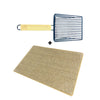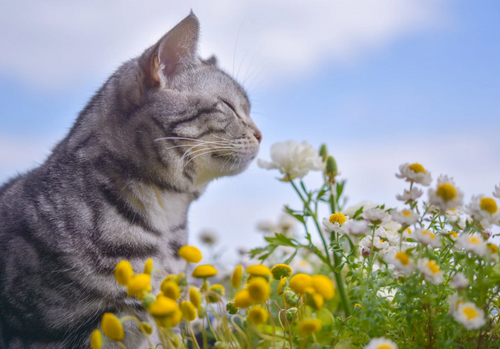When it comes to cat litter, most pet parents rightfully want to know how well it works.
A lot of that depends a lot on how it’s made, which in turn affects how environmentally friendly a litter is. Whether your litter is a friend or foe to the environment depends!
Let’s take a closer look at how clay, silica, and wood litters stack up in the environmental friendliness department.
Clay Litter:
Clay litter is the OG of cat litter – it’s been around and polluting the environment since the 1940s!
Clay is strip mined, an environmentally destructive form of mineral removal, which destroys the mined land and can cause erosion, sedimentation in nearby waterways, negative aquatic health, and increased risk of groundwater contamination. Clay litter is also heavy, so when it’s transported – sometimes a long distance from the source to the manufacturer – increased emissions are a foregone conclusion.
Once it lands at a processing plant, the clay is ground, acidified to increase surface area, modified with additives to improve absorption and odor mitigation, and make it as white as beach sand. It’s then granulated, dried, and screened. Whew!
Clumping clay litters contain a specific type of clay called bentonite, which gives the litter its ability to form clumps. Non-clumping litter still contains clay, just without the added bentonite.
Clay litter is affordable and effective at absorbing moisture and controlling odors. Unfortunately, its absorptive powers come from crystalline silica dust – a carcinogen that is not biodegradable. Yikes!
Crystal Litter:
Crystal litter is a newer addition to the cat litter lineup, and it’s made of tiny beads of silica (but not the crystalline type used in clay litter). These silica gel granules are porous, so when they’re exposed to liquid, they pull the moisture into their tiny pores and trap it – along with odors – inside the bead. The moisture inside evaporates, while the odorous molecules stay behind and away from your nose!
However, manufacturing crystal litter also begins with mining, but this time for silica, another environmental concern. A heating process transforms the mined silica into a gel, ensuring the litter is non-toxic for cats and humans alike.
Some silica litters are made in China, so the transportation emissions are concerning, as this USA-sold product is imported from so far away. This is not great for the planet from an emissions standpoint.
Crystal litters are very absorbent with excellent odor control. They’re low-dust and lighter and longer lasting than clay litters, so less of this non-biodegradable product is landfilled than clay litter.
Still, crystal litter and the process by which it’s made is not a win for the environment!
Wood Litter:
Wood litters are made from wood residuals, utilizing a byproduct of the lumber industry that would otherwise be landfilled (but at least it’s biodegradable there). The wood residuals are lightweight, and they’re found in close proximity to the processing location, minimizing transportation emissions.
The manufacturing process is simple. The wood or wood residuals are compressed, then either pelletized or broken into granules, and treated with clumping agents to enhance absorption. Some wood litters are also treated with scent or additives to improve the litter’s functionality, clumping, or odor absorbing qualities. For example, Catalyst’s clumping agent is guar gum, a sustainable plant extract that makes scooping litter box droppings a breeze.
Wood litter is eco friendly, biodegradable, naturally odor-absorbent, and cost-effective.
Within wood litter offerings, there is lots of variation regarding odor absorption, clumping – some wood litters, like Catalyst, also clump! – and other options. We’ve got a slew of reasons why Catalyst will make your wildest cat litter dreams come true, and being a friend to the planet is at the tippy-top of the list.
Rest assured the environment will thank you for choosing a sustainable, wood-based litter option!











